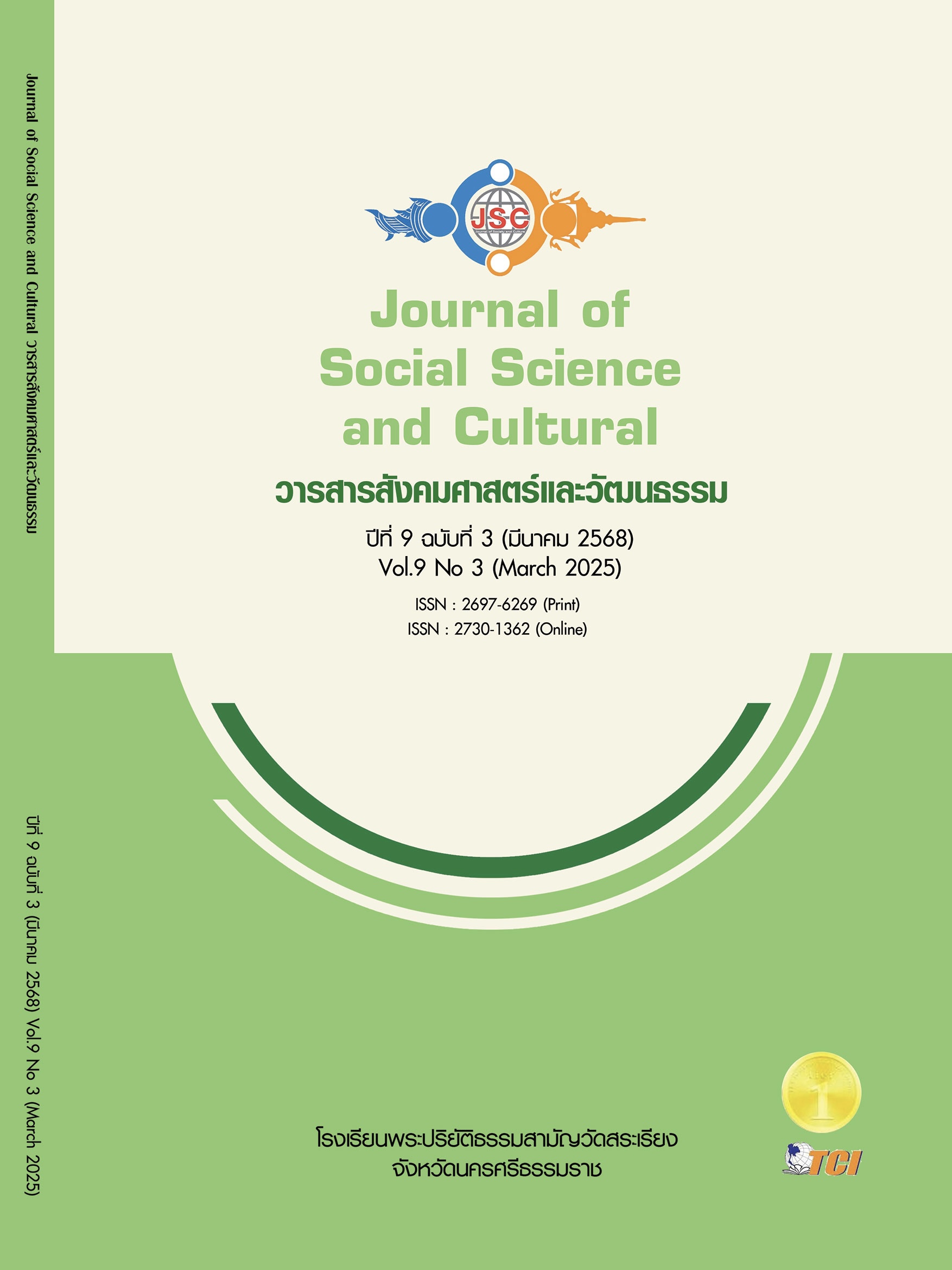THE ART OF CREATING AN IDENTITY FROM STORYTELLING USING CARTOONS AS A BASE TO CAMPAIGN TO STOP VIOLENCE AND SEXUAL HARASSMENT AGAINST PEOPLE IN SOCIETY
Main Article Content
Abstract
This research has the purpose of 1) to create knowledge about the dimensions of creative work. The art strategy of creating identity from storytelling using channel cartoons as a base. Which will lead to guidelines for creating awareness for the public about the way to reduce violence and sexual harassment of people in society 2) Seek and study guidelines to prevent violence and sexual harassment users. For the elimination of the above problems to society in various dimensions 3) Develop a Practice Based Research model, creating media to fix and prevent Including sustainable solutions to the country's problems To eliminate all forms of violence and sexual harassment Using the foundation research methodology (Grounded Theory), the tools used in this research are the expert interview form, the interview form of the target group representative, and the awareness evaluation form. The results of the research can be summarized as follows: 1) The opinions of experts on the problem of severity. To the appropriateness of the work, 9 people found that the quality of the appropriateness of the work is at a very high level ( = 3.78) 2) The results of the interview for the target group representatives (Try Out) on the suitability of developing channel cartoon creations, 30 people, found that channel cartoons and symbolic narratives help readers understand the problem of violence and sexual harassment in depth. 3) Assessment of awareness by the target group who witnessed violence through various media, aged 18-29 years old, 352 people by evaluating the awareness of the creation of the channel cartoon. There is a learning awareness at the highest level (
= 4.90) It is considered a creative approach to promote a safer and more equal society.
Article Details
References
กระทรวงการพัฒนาสังคมและความมั่นคงของมนุษย์. (2566). สถิติความรุนแรง ปีงบประมาณ พ.ศ 2566. เรียกใช้เมื่อ 17 กุมภาพันธ์ 2568 จาก https://1300thailand.m-society.go.th/statyearly?page=1
กระทรวงการพัฒนาสังคมและความมั่นคงของมนุษย์. (2567). สถิติความรุนแรง ปีงบประมาณ พ.ศ 2567. เรียกใช้เมื่อ 5 มกราคม 2568 จาก https://1300thailand.m-society.go.th/statyearly
สุมนทิพย์ จิตสว่าง และคณะ. (2566). ความรุนแรงในสังคมไทย. วารสารสังคมสงเคราะห์ศาสตร์, 31(1), 47-88.
หมอก. (2559). มหาลัย’สายมังงะ. กรุงเทพมหานคร: บันลือบุ๊คส์.
Bandura, A. (1977). Social learning theory. New Jersey: Prentice-Hall.
Blumer, H. (1969). Symbolic interactionism: Perspective and methods. New Jersey: Prentice-Hall.
Charmaz, K. (2006). Constructing Grounded Theory: A Practical Guide through Qualitative Analysis. London: Sage Publications.
Freud, S. (1923). The Ego and the Id. In J. Strachey et al. (Trans.), The Standard Edition of the Complete Psychological Works of Sigmund Freud, Volume XIX. London: Hogarth Press.
Galtung, J. (1996). Peace by peaceful means: Peace and conflict, development and civilization. Oslo: Sage Publications, Inc.
Jenkins, H. (2006). Convergence Culture: Where Old and New Media Collide. New York: New York University Press.
Jung, C. (1964). Man and his symbols. London: Aldus Books Ltd.
Kolb, D. A. (1984). Experiential Learning: Experience as the Source of Learning and Development. New Jersey: Prentice-Hall.
Lavers, A. (2009). Roland Barthes: Structuralism and after. London: Methuen & Co. Ltd.
McCloud, S. (1994). Understanding Comics: The Invisible Art. Bangkok: Corporation4d.
Mead, G. H. (1934). Mind, Self, and Society from the Standpoint of a Social Behaviorist. Chicago: University of Chicago Press.
Peirce, C. S. (1958). Collected papers of Charles Sanders Peirce. Massachusetts: Harvard University Press Harvard University Press.


